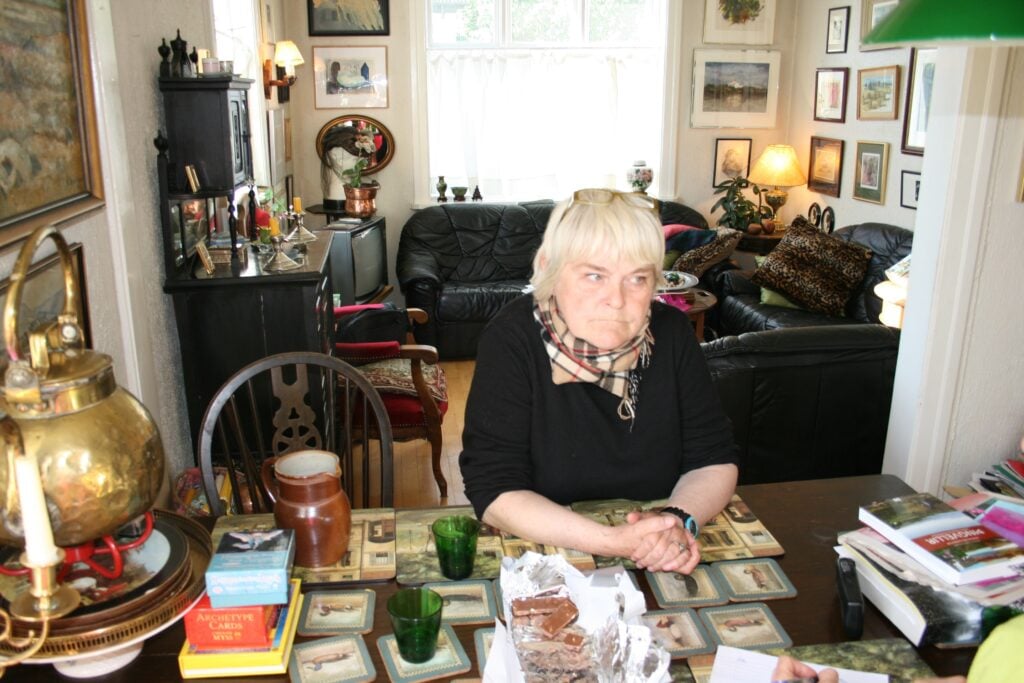 Northern Lights—My Passion
Northern Lights—My Passion
But I Donʼt Want My Grandchild to be Cross-eyed
The Northern Lights are an amazing phenomenon for all but for one tourist guide in Iceland, it is more than just that—it is her great passion in life. “I love the Northern Lights and, in recent years, I’ve turned my attention increasingly to the sky and space phenomena,” says seasoned tourist guide Ragna Sigrún Sveinsdóttir.

More and more people visit Iceland in the winter. First time visitors often expect to see the lights the moment they step foot in the country, which of course is quite possible but not always true. Viewing Northern lights must meet five criteria. First, it has to be night as daylight drowns out the faint light emitted by the Northern Lights. Second, skies must be clear or partly clear. Third, there has to be an eruption on the sun. Fourth, the solar wind which carries fine particles ejected from eruptions on the sun has to be directed towards Earth. Fifth, the particles from the eruptions must reach the Earth’s magnetic field.
Best Time to See the Lights
Ragna Sveinsdóttir says the lights are particularly good this year as we’re coming close to the 11-year peak in sunspot activity predicted in 2013. “More solar activity means more Northern Lights activity; it’s as simple as that. Closer to the peak, we can expect more nights lit by Northern Lights on the average than at other times. 2012 was excellent and we’re looking forward to another two or three fantastic years. It is possible to see the Lights in Iceland from end of August to mid-April. Depending on conditions, of course, it is possible to see the lights anytime it is dark. Statistically speaking, the best time of the day to see them is late evening through to early morning.”

Northern Lights and Civilisation
Iceland is perhaps the most accessible place in the world to view the Northern Lights. In winter, after dark, it is possible to see the lights the moment you step out of Iceland’s international airport terminal. The international airport is only 35 miles from the nation’s capital city. Other suitable places in the world in which to see the Northern Lights are quite remote. They include the northern parts of Canada, Southern half of Greenland, northern parts of Norway, Sweden, Finland and Russia.
The Expert’s Favourite Places
“It’s a great privilege to live in Iceland and to be able to admire the Northern Lights on most clear nights,” says Sveinsdóttir who has guided for the Reykjavik-based bus tour operator, Reykjavik Excursions for years. “Sometimes it’s possible to see the lights from Reykjavik but for the best view, it is necessary to drive out of the city to get away from the electric lights. The tours I lead take about 3 hours and I must admit that I’m still, after all these years, equally excited to see the Lights as my guests. My favourite places to search for the Northern Lights in the vicinity of Reykjavik are Þingvellir National park, Hvalfjörður fjord, Melasveit, Vatnsleysuströnd, Ölfus and Grímsnes in the south.
I Don’t Want My Child to be Cross-Eyed
Superstition has surrounded the Lights from time immemorial. In France and Italy, the Lights struck fear into the population. They rarely appeared that far south and people were shaken by the sight, believing the Lights to be a warning of illness, plague or death. “It was a common belief, at least in some parts of Iceland, that pregnant women who looked at the lights would give birth to cross-eyed children. I know one story from Langanes peninsula in the north east part of the country. In 1960, a young foreign pregnant woman was visiting her Icelandic mother in law with her husband. One night the Northern Lights appeared. As the couple watched the display in awe the mother in law appeared, and dragged her daughter in law into the house exclaiming, ‟I don’t want my grandchild to be cross-eyed!”
Remember to Dress Warmly
The Northern lights attract people from all over the world. “English and Americans are probably the most numerous. We also get people from various countries in mainland Europe, Asia, Central America and Africa. It doesn’t seem to matter where people come from, everyone is interested in the Lights. The Japanese have a special interest in them because seeing them symbolises fertility and success in private life.”
One important thing to remember when searching for the Lights, Sveinsdóttir says, is to dress warmly. “It can get cold while standing outside the bus on a mountain pass in the middle of the winter. One might have to wait a while for the lights to appear. When the lights do appear you want to spend time outside watching the amazing display and it is much more enjoyable if you’re not freezing cold. Personally, I wear warm shoes and warm socks, leather gloves with thick lining, a scarf, a warm hat, one or two woollen jerseys and a heavy coat.”



